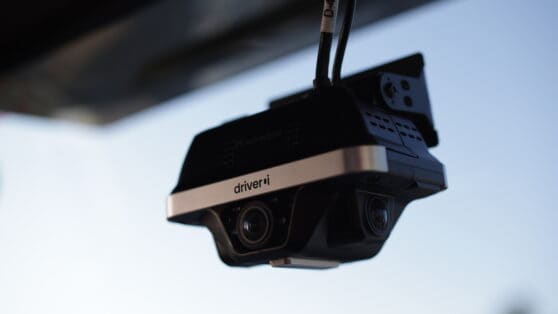Fleets are in dire need of drivers. In 2018 the industry was short 60,800 drivers, and if trends continue the American Trucking Association estimates that fleets will be short 160,000 drivers by 2028. Why is there a truck driver shortage? The reasons are numerous, but some of the biggest are high turnover rates, a lack of competitive compensation, and an aging workforce.
To beat the truck driver shortage, fleets should focus on reducing turnover by boosting their incentives and pay packages. They also need to start strategizing ways to attract the next generation. Right now, young people don’t consider truck driving as a viable career path—many millennials don’t even drive. This is a major concern. If carriers don’t overcome demographic trends by attracting younger generations, the driver shortage is only going to get worse.
Here’s why millennials are crucial for overcoming the truck driver shortage, and how to appeal to them.
Truck Drivers Demographic
The average age of truck drivers is 55. In fact, 60 percent of all truck drivers today are over 45 years old, and more than 20 percent are over 55. More baby boomers are retiring every year, and in the next 10 years 25 percent of truck drivers will hit retirement age. To reverse these trucker demographics, the industry needs to start making inroads with the next generation of young truck drivers. In other words, it needs to start appealing to millennials.
When people think about millennials, they frequently imagine young people. But millennials aren’t really so young anymore. Born between 1981 and 1996, today’s millennials range in age from 25 to 40 years old. So, while some millennials may be inexperienced, most are not. Millennials have surpassed Baby Boomers as the nation’s largest generation, and are a substantial untapped talent pool. In 2015 they made up 50 percent of the domestic workforce—a figure that’s projected to grow to 75 percent by 2030.
How to Improve the Trucking Industry Image
To entice millennials into transport service jobs, the industry needs to make a convincing case that truck driving is a rewarding and respected job. Recently, one survey asked truck drivers about what they wanted, and 98 percent said respect. They also lamented negative stereotypes about their profession. Basically, truck driving suffers from an image problem. So what can carriers do to improve the industry’s image? Here are four places to start:
Make your company culture attractive
Many millennials want jobs that have a purpose. They want to feel like what they do really matters. To meet this need, the trucking industry needs to highlight the driving force behind what they do and how it contributes to the greater good. It’s also important to provide them with professional development opportunities, mentoring programs, and employee appreciation events. These initiatives can help foster a sense of belonging. And make sure they feel a part of a larger community by getting them actively participating in the group. Start by regularly soliciting feedback and implementing their suggested changes.
Offer flexible working hours
While any career can create conflicts between work and family life, truck drivers can be on the road for two or three weeks at a time. Today, 75 percent of truck drivers say they’ll be leaving the industry within the next five years due to a lack of schedule flexibility. This is a sticking point for millennials, who gravitate toward careers that prioritize work/life balance. For many, a consistent schedule can even be more important than a high salary. Fleets that give drivers flexibility in how much time they spend on a single stretch—and provide guaranteed predictable days at home—have a 22 percent lower turnover rate. Looking ahead, they’re also much more likely to be successful at recruiting and retaining millennials.
Highlight incentives
If millennials don’t feel valued at their jobs, they won’t hesitate to switch to another company or industry. They want to feel that their hard work is recognized and valued—it’s simply human nature. This is where an incentive program can really help. Incentive programs positively reinforce safe driving behaviors through rewards and recognition. In the process, they significantly improve driver retention. Fleets that treat drivers with appreciation and respect are the most successful at attracting and retaining drivers. So make sure that your managers make an effort to really know your drivers as people.
Provide competitive pay, raises, and career advancement
According to conventional wisdom, millennials are not motivated by money. However, 90 percent of millennials will stay loyal to a job if it provides regular pay increases and upward mobility. In fact, millennials rank base pay as the most important factor in choosing and staying loyal to a job. To get this generation interested in truck driving, a simple and effective tactic is to raise base wages. Back in 2018 when the driver shortage was at an all-time high, many fleets offered large pay increases to entice drivers in addition to minimum weekly pay to provide consistent paychecks. This tactic is a time-tested way to recruit new drivers from any generation.
Final Thoughts
How bad is the truck driver shortage? Recently, the challenges facing the industry have increased, and the 2021 truck driver shortage is critical. But fleets have a chance to turn things around. If carriers start focusing on attracting millennials by making strategic changes, they’ll not only ensure they can meet today’s labor needs, they’ll also be ready for future growth opportunities. Boost the industry’s image by increasing pay, launching incentives programs, and introducing more flexible work hours, and millennials will recognize that truck driving can be a highly rewarding career.
Read the Guide to Driver Coaching for more strategies and tips.







